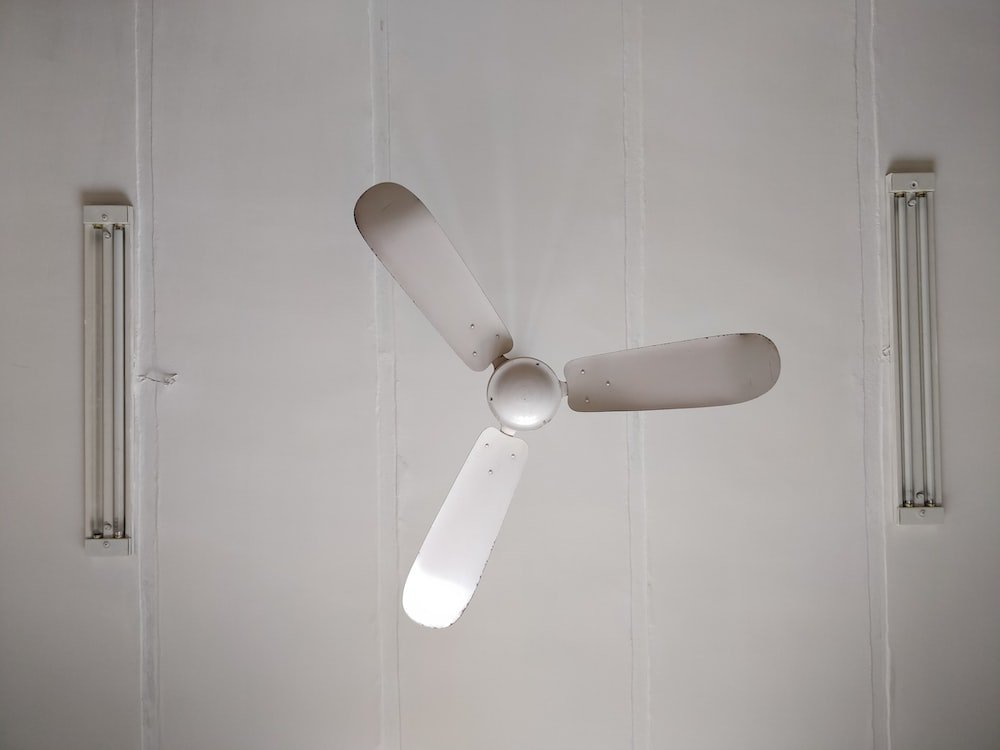Feeling frustrated by the relentless noise of your ceiling fan as it spins round and round? Your peace and quiet are constantly interrupted, certainly making work or relaxation a challenge. The article titled “How To Quiet A Noisy Ceiling Fan?” is brimming with solutions to your problem.
Informative and lucid, it unravels numerous practical steps you can take to silence your fan and return your living space to its tranquil, serene state.
From simple solutions to slightly more involved hacks, this article has got you covered. You’ll be surprised at just how straightforward some of these tips are! So, why let a noisy ceiling fan control your peace of mind when tranquility is only an article away?
Understanding the Types of Noise
In determining how to quiet a noisy ceiling fan, it’s beneficial to start by understanding the different types of noises your fan may produce. This can give a clue as to what may be causing the problem.
Tick Sounds
Tick sounds are often sharp and intermittent. They’re usually a result from a loose component that’s getting hit by the fan blades or a cracked blade. This could also be due to the loose screws or even debris accumulation in the fan housing.
Buzzing Sounds
Buzzing noises are often indicative of electrical issues. This could be due to a faulty capacitor, poor power supply, or a problem within the fan’s motor. Identifying these sounds early can help you address the issue before it leads to further damage.
Humming Noises
Humming noises, in contrast to buzzing sounds, tend to be consistent and can oftentimes be quite irritating. This is usually due to faulty wiring or a worn-out motor.
Clicking Sounds
The clicking sound is a common noise issue that can be caused by a range of issues such as unbalanced fan blades, loose hardware, or defective bearings.
Ensuring Safety Before Quick-fixing the Fan Noise
Before attempting to solve the noise problem, it’s essential to ensure your safety.
Turning Off the Power
Begin by turning off the power to the fan at the circuit breaker. This ensures that the fan will not accidentally turn on while you are working on it, and helps to avoid any unpleasant surprises.
Inspecting the Fan Unit
Once the power is off, you should do an initial inspection of the fan unit. Look for any obvious signs of damage or wear that may be causing the noise. If you notice anything out of the ordinary, this could be the source of your problem.
Wearing Protective Gloves
Wearing protective gloves is another step to ensure your safety, particularly when dealing with sharp edges or rusty components. It also provides an added layer of protection during the process.

Inspecting the Screws and Hardware
Loose or missing components in your fan unit can cause a whole range of noise problems.
Signs of Loose Fixings
Loose fixings can be a common source of ticking or clicking noises. Inspect all visible screws and fittings on your fan to identify any that may be loose.
Tightening Loose Screws
You can tighten any loose screws using a screwdriver. You should also ensure that all screws are secure, but take care to not overtighten them, as this can cause other problems.
Checking for Missing or Damaged Components
If there are missing or damaged components, these should be replaced. You can usually order replacement parts from the fan manufacturer’s website or at a hardware store.
Identifying the Motor Issues
The ceiling fan motor is another common culprit of disruptive noises.
Signs of Motor Malfunction
If your fan is humming or buzzing, this could be due to a problem with the motor. If the fan is not spinning smoothly, or is spinning at inconsistent speeds, this could also point to a motor malfunction.
How to Fix a Defective Motor
If the motor is defective, it may need to be repaired or replaced. Some issues, such as a faulty motor capacitor, can be easily replaced at home. However, more complex repairs may require professional attention.
Replacement of the Motor
Motor replacement should be done by a professional. Ensure that the replacement parts are compatible with your fan model to avoid any further problems.

Check the Blade Alignment
Misaligned fan blades can also be a source of noise.
Checking the Fan Blade Balance
If your fan is producing a ticking or clicking noise, it’s possible the blades are unbalanced. Use a balancing kit to check this.
Aligning the Blades Properly
If the blades are misaligned, you can balance them by adding weight to the lighter blades with the adhesive weights provided in the balancing kit. Remember to check the balance after each adjustment.
Replacing Damaged or Bent Blades
Should your fan blades be damaged or bent, you’ll need to replace them. In most cases, it’s best to replace all fan blades to ensure that they are all the same weight and size.
Working on the Bearings
The fan’s bearings are another potential source of noise.
Determining if the Bearings are the Issue
A squeaking or grinding noise is often indicative of a bearing issue. If your fan’s bearings have not been correctly maintained, they can dry out, causing the fan to noise.
Lubricating Squeaky Bearings
In most cases, squeaky bearings can be resolved by applying a few drops of lightweight, electrically safe oil to the bearings. This will help to lubricate them and reduce the noise.
Replacing Worn Out Bearings
If your fan’s bearings are worn-out, they will need to be replaced. This task is best performed by a professional to ensure it is done safely and correctly.

Dealing with Vibration Noises
Vibration noises can also cause noise issues.
Detecting Vibration-caused Sounds
If there is a vibrating or buzzing sound, your fan might not be securely mounted, causing it to vibrate against the mounting structure.
Using Vibration Isolation Pads
To remedy this, you can use vibration isolation pads. These pads are designed to absorb the vibration and reduce the resulting noise.
Bracket Adjustment to Reduce Vibration Noise
Another solution is to check and adjust the fan’s mounting bracket. Tightening the screws and ensuring the bracket is securely fixed can help eliminate the vibration noise.
Assessing Electrical Issues
Buzzing noises from a fan can indicate an electrical issue.
Faulty Wiring Nosies
Faulty wiring can cause a buzzing sound in your fan. Discoloration, fraying, or exposed wires can be signs of faulty wiring.
Repairing or Replacing the Faulty Wires
Once this problem has been identified, you should repair or replace the faulty wires. This task should be approached with caution due to the risk associated with dealing with electrical components.
Contacting a Licensed Electrician for Complex Issues
If you’re not confident in your ability to handle this task, don’t risk it. It’s best to call a licensed electrician to handle complex electrical work.
Checking the Capacitor
A faulty capacitor can also create a buzz in your fan.
Signs of a Bad Capacitor
The signs for a bad capacitor are when the fan buzzes but doesn’t move or if it’s moving slowly despite being set on a high speed.
Repairing or Replacing the Faulty Capacitor
Resolving a faulty capacitor usually involves replacing it. It is important to ensure that the replacement capacitor matches the specifications indicated on the original one.
Regular Maintenance for a Quiet Operation
To prevent noise issues in the future, regular ceiling fan maintenance is essential.
Routine Checkup
A routine checkup can help to identify and correct minor issues. Regularly checking screws and connections can go a long way in preventing noise issues.
Regular Cleaning and Dusting
Dust accumulation can also lead to noise and imbalance issues. Hence, ensure the fan is regularly cleaned and the blades are dusted.
Scheduled Professional Servicing
It’s also recommended that your fan is professionally serviced at least once a year to be sure that all components are functioning properly.
Installing Noise Dampening Products
There are also noise dampening products available that can help minimize vibration noises. These can range from simple washers to more sophisticated sound dampening pads for fans.
In conclusion, understanding the types of noise produced by your ceiling fan and taking corrective measures can really make a difference to your living space. Remember, if at any point you feel unsure, it is always safer to hire a trained professional. Stay safe and enjoy the comfort of your fan without the unwanted noise.




